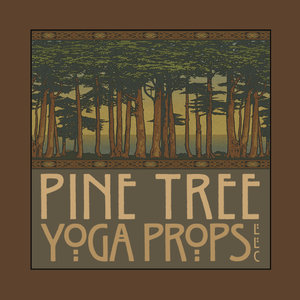FAQs
All of the props (unless a specific species is requested) are made of Cherry (Prunus avium), a species of hardwood native to the Northeast coastal region of the United States. Joints are glued and screwed with coated deck screws which are countersunk and covered with walnut plugs. We use two coats of a water-based polyurethane floor varnish that is non-toxic and very tough that may be wiped down between classes for enhanced safety from viruses. Please note: this finish is for indoor use only. Nearly every piece of each prop is at least one full inch thick. This thickness of wood and the clean, simple design assures many years of faithful service in the studio or home.
All props are as nearly as possible faithful to the dimensions approved by Mr. Iyengar or his family.
Q: With the founder’s retirement will there be changes to the designs of the props?
A: Ethan did not design the props offered by Pine Tree Yoga Props. Pine Tree Yoga Props was founded with very close input of Senior Iyengar Yoga Teachers. Osiris will continue the legacy that Pine Tree Yoga props was founded on.
The one change that can be expected is the species of the wood used due to Osiris’ shop being located in the Northeast of the U.S.
Q: What is the standard production time?
A: As a Solopreneur woodworker, Osiris carefully and meticulously handcrafts each prop to ensure the highest standard of quality expected of Pine Tree Yoga Props. As a result, most larger props have a production time of up to 8 weeks.
Q: Does the Trestle ship assembled or apart?
A: The Trestle ships in two packages, one long and narrow at about 50lbs, and one triangular and about 36lbs. It comes with assembly instructions which is quite simple, requiring a helper and a half-inch socket wrench.
Q: What is the difference between the San Francisco Trestle and the Classic Trestle?
A: The main differences are that the San Francisco Trestle is 1-1/2” taller and has 2-1/4” more space between the bottom of the wood beam and the center of the steel pipe. The Classic and the San Francisco props weigh about the same (around 70lbs, assembled) and occupy the same footprint of 74” by 30”.
Q: How do you use that prop?
A: For instruction, please contact an IYNAUS-certified teacher. One may also visit our Facebook page using Pine Tree Yoga Props, LLC as key words to see photos of many of these pieces in use. Again, pictures do not substitute for qualified instruction so please consult with a CIYT.
Q: Do you ship to customers outside the United States?
A: Yes.
Q: Are you available for a phone conversation?
A: Certainly! We don’t post a phone number since last time we did we were inundated with calls from telemarketers. Just let us know via email and we can connect by phone.
Q: Did you design any of these props?
A: We did not. These pieces are all derived from the originals at the Ramamani Iyengar Memorial Iyengar Institute in Pune, India. Some, as in the arched props, are even built to tracings of the originals. We have, however, adapted some of the construction methods to suit our machines and materials. The fasteners and glues available in the US are far superior to those used in India. We have heard from many certified senior teachers that our props are stronger, more finely finished and more durable than the Indian originals.
Q: The shape of my body varies from average (quite tall to quite short. 90lbs to 390lbs). Are you able to customize a (fill in the blank) to fit me?
A: In most cases, yes. If you are an experienced practitioner, or a teacher with clear ideas of what is needed, all I will need is the preferred dimensions of the props in question. For someone newer to asana practice I usually encourage consulting an IYNAUS-certified teacher to establish the exact dimensions that will work. Again, a phone conversation is easily arranged. We have adapted props to users between 4’ 10” to over 7’.
Q: Why doesn’t your backbender [Viparita Dandasana Bench] have notches for a dowel?
A: The dowel option appears on some backbenders to facilitate extended seated forward bends. We do not include them because the board at the tall end of the prop slopes away from the user. If that board were vertical or, even better, sloped toward the user, we would include them. A better (and less costly to the buyer) way to extend a seated forward bend is to place a pair of blocks under the feet and either grasp the blocks or put a belt around them.
This raises another question: Why not redesign the backbender so that that board slants toward the user? Because that is not how it is one in Pune. The board in question slopes at 11 degrees for a very specific reason. That degree of slope allows a rectangular bolster to lean against that end as well as provides the best transition from the progressive curve to the floor.
